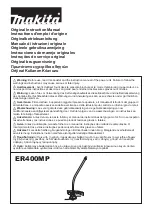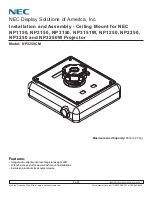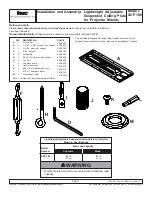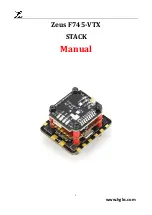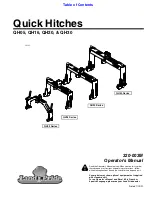
A Tour of the MultiMix USB2.0
2
15
CTRL RM OUT
You can use these 1/4" jacks to send the control room signal to
the input of the amplifier driving your monitors or headphones.
This output can carry several different signals, depending on which
source you have selected in the master section of the mixer.
Channel Strips
The eight channel strips are virtually identical to each other, with
the only difference being that channels 1 – 8 are mono and
channels 9 – 16 are stereo. Each channel strip contains the
following components.
Fader
The fader controls how much of the signal from the mic or line
inputs is sent to the channel. To adjust the level, simply slide the
fader up and down to the desired level. In the lowest position,
levels are cut completely, and in the uppermost position you get an
additional 10dB of gain. When the fader is at 0, it is at unity gain,
where the level of the output equals the level of the input.
MUTE / Alt 3/4
This switch has two purposes. The mute function is pretty self-
explanatory: when you press the switch, the channel’s output is no
longer routed to the main mix output. The second purpose of this
switch is that in addition to muting a channel, it also routes it to
the ALT 3/4 OUT found in the patchbay. This is where you get
the MultiMix’s extra stereo bus. If you don’t have anything
connected to the ALT 3/4 OUT, the switch acts only as a mute
button. If you do have something connected—say, a multitrack
recorder—this button acts as a signal router.
PFL / SOLO
The PFL
/ SOLO switch allows you to single out a channel so you
can make adjustments to it before you run it into the main mix.
This is useful for setting an instrument’s gain or EQ and for
troubleshooting. PFL stands for “pre-fade listen.” In other words
this switch lets you hear the signal before it is affected by the fader.
This switch is post-EQ.
PAN or BAL
This control—labeled PAN on the mono channels and BAL on
the stereo channels—lets you assign the channel to a particular
spot within the stereo spectrum. If you turn this knob to the left,
you can hear the signal move to the left, and if you turn it to the
right…you get the picture. The pan controls do this by adjusting
the amount of the signal being sent to the left main mix bus versus
the right main mix bus. The balance controls do it by controlling
Summary of Contents for MULTIMIX 16
Page 1: ...Reference Manual...
Page 2: ...This page intentionally left blank 10 20 30 40 50 60 70 80 90 100...
Page 6: ...Table Of Contents 4...
Page 12: ...Introduction 10 This page intentionally left blank...
Page 50: ...6 Troubleshooting non USB2 0 48 This page intentionally left blank...
Page 52: ...7 Troubleshooting USB2 0 50 This page intentionally left blank...
Page 55: ...9 Block Diagrams 53...
Page 56: ...9 Block Diagrams 54...































